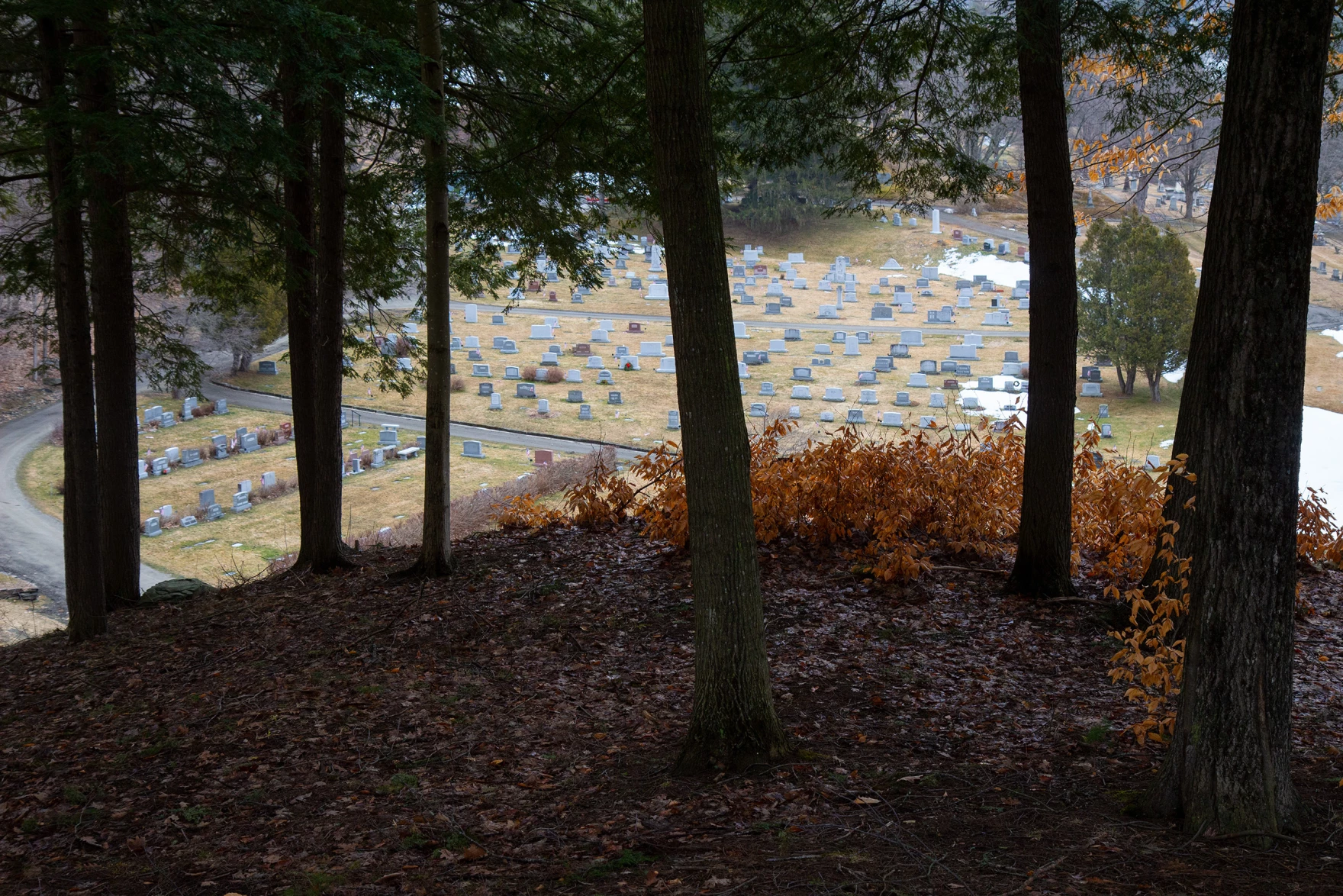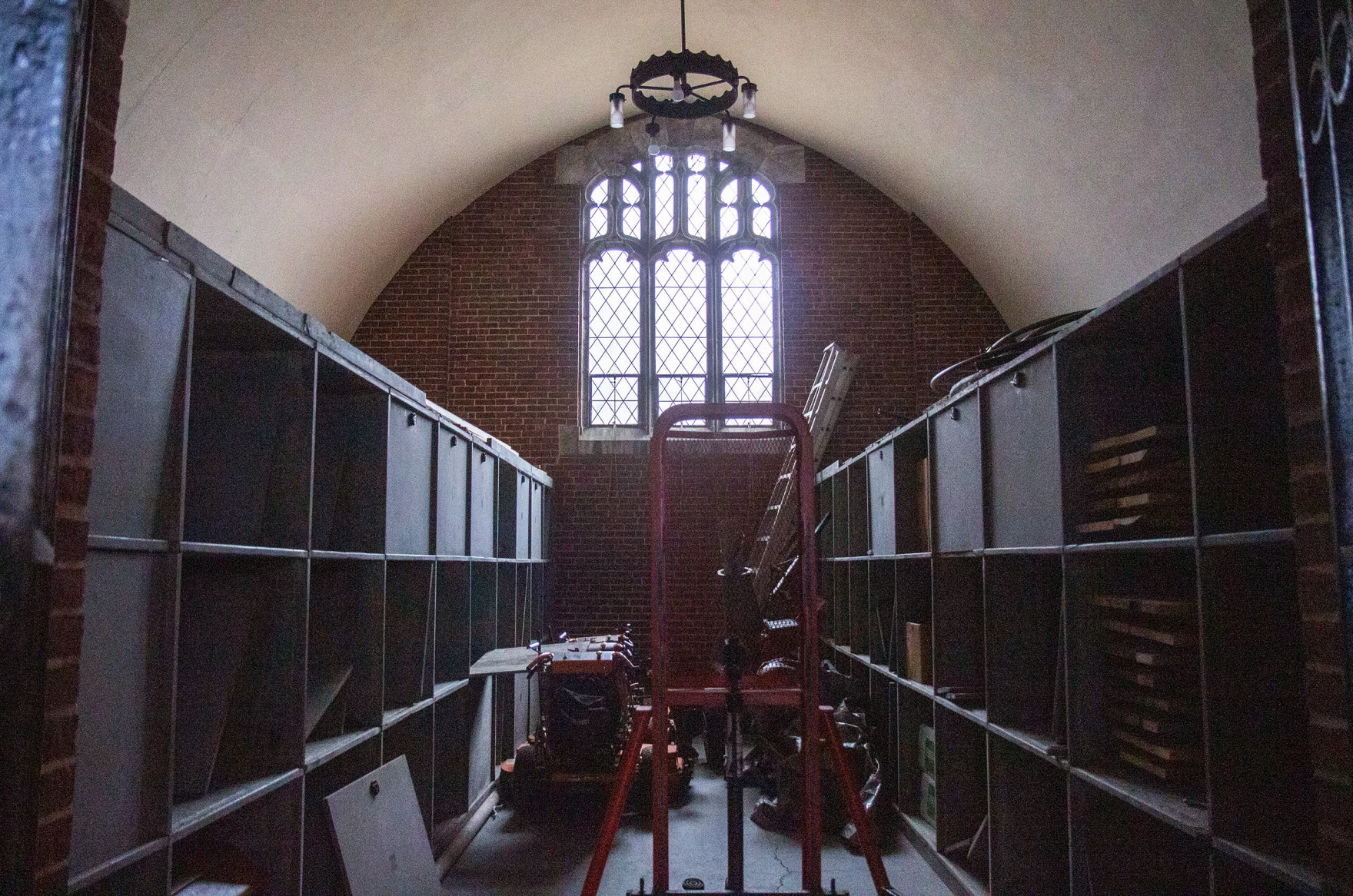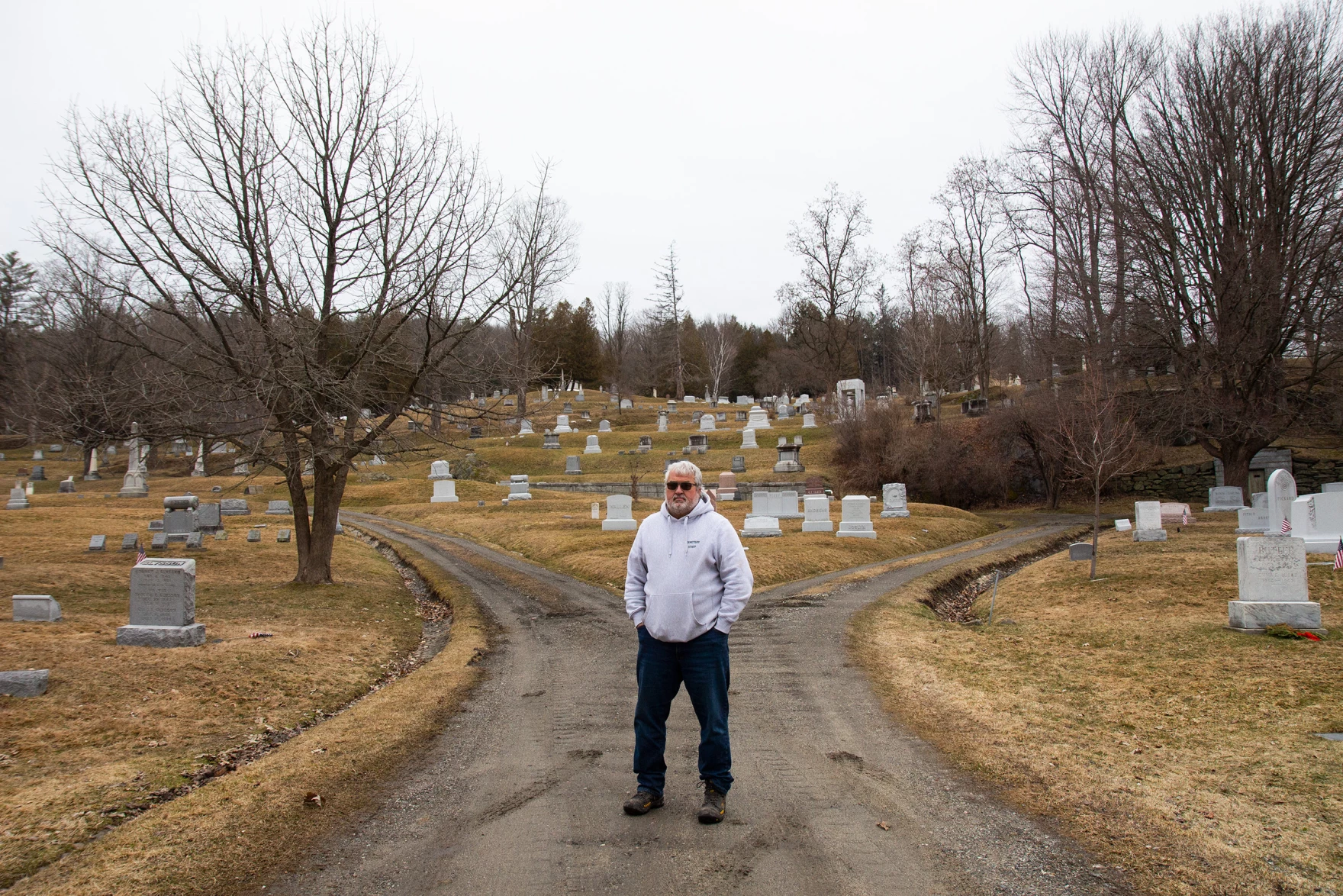Natural burials were illegal in Vermont. Now they’re having a resurgence

More than 70 cemeteries across New England have started offering natural burials in recent years, including Green Mount Cemetery in Montpelier. That’s where bodies can decompose underground, without the use of embalming fluids or concrete vaults. (Elodie Reed / Vermont Public)
At the entrance of Green Mount Cemetery in Montpelier is a white marble building. Inside were six bodies, on a visit in early April. They were being stored by a local funeral director while the ground was still frozen.
When Patrick Healy started working at the cemetery 35 years ago, the vault building was full of dozens of caskets during winter months. That’s no longer the case.
“The cremation rate has gone way up,” he said. “So they don’t need storage.”
Healy is the director of the cemetery here, and president of the Vermont Cemetery Association.
He said the bodies in the vault have all been embalmed. They’ll be buried at other cemeteries across the state this spring.

The winter storage vault at Green Mount Cemetery used to hold dozens of caskets at a time. That’s no longer the case, as cremations have become the most common form of interment. Now, some people are considering natural burials instead. (Elodie Reed / Vermont Public)
For the past few years at Green Mount Cemetery, there’s been a section of graves where none of that happens — there are no embalming fluids, or monuments, or a manicured lawn. Burials take place year-round. The dead are wrapped in shrouds and laid to rest in wicker baskets and pine boxes.
It’s up a hill at the edge of a forest. The graves here are shallower than a conventional burial plot. On top of one, daffodils are just beginning to poke up. Another is covered in hay from a burial this winter.
“It was probably 10 below that night, after the burial,” Healy said. “So we covered it up with hay so that the ground never really freezes. So you can start the decomposition process.”
Letting the dead decompose is the whole idea behind this part of the cemetery. It puts nutrients back in the soil and doesn’t produce the carbon associated with conventional burials or require the energy needed for cremations — the equivalent of powering an average-sized home for a week, according to the Cremation Association of North America.
People have been buried this way forever. It’s the custom in Jewish and Muslim burials. But the process is new for a lot of cemeteries in the U.S.

The graves in the natural burial section are 3 and a half feet deep, shallower than a conventional burial plot, where there’s more oxygen, heat and microbial activity in the soil to encourage decomposition. (Elodie Reed / Vermont Public)

Green Mount is adding blueberry bushes, apple trees, and wildflowers to their natural burial section. Healy said he didn’t think it would take off as fast as it did. (Elodie Reed / Vermont Public)
Healy now gets a couple of emails a week from people around the state asking about how to bring natural burials to their towns.
“I don’t know if it’s because it’s new, or if people are just wanting something very environmentally friendly,” he said. “And what we’re finding is, a lot of people are being converted from, ‘Oh, I was going to be cremated. Now I just want a natural burial.’”
A lot of cemeteries in the region are working to meet demand by allowing natural burials, which cost between $2,000 to $3,000 in most cemeteries in Vermont, and often more for non-residents.
“Marshfield just opened one and Woodbury just opened one and so did Hardwick,” said Joe Mangan. He manages cemeteries for several Vermont towns, including five that offer natural burials.
This is a huge change from just a couple of years ago. In 2015, natural burials were only offered at five cemeteries in all of New England. Now, there are well over 70 in the region, according to the Green Burial Council.
But it’s taken some effort.
“The first, biggest obstacle was that it was against the law,” said Jennifer Whitman, a former cemetery commissioner in the town of Calais, Vermont.
Before 2017, Vermont law required all burials to be five feet deep, and many individual cemeteries had bylaws requiring concrete vaults. Some still do, like in Burlington.
Many of these rules are holdovers from over a century ago.
“There was a lot of grave robbing happening at one point in history, largely to source cadavers for medical research,” said Michelle Acciavatti, a funeral director and end-of-life specialist who is set to open a conservation cemetery in Roxbury, Vermont by the end of the year.
“Vaults were originally invented as ways to protect bodies within graves,” she said.
“What we’re finding is, a lot of people are being converted from, ‘Oh, I was going to be cremated. Now I just want a natural burial.’”
Patrick Healy, Vermont Cemetery Association
There are more modern factors at play too, like lawn mowers. Cement vaults keep the ground from settling and becoming uneven, which is harder to mow.
“The more and more we heard that we were like, ‘So wait, the ethic that’s coming first is the lawn mower, not the humans’ belief in how they want to be buried?’” said Whitman.
She was one of the leaders in the effort to change the law in Vermont. She says initially there was a lot of pushback, including from Patrick Healy at Green Mount.
“I was the biggest opponent at the Statehouse,” he admitted. “And the Statehouse, just being half a mile down the road, it’s easy for me to go down there.”
Healy said he had all these practical concerns, like animals digging up graves, the smell from bodies, or whether the dead would actually decompose in the soil here.
None of that has ended up being an issue, he said, and there’s been an added benefit.
“It’s more personalized and it’s more intimate,” Healy said. “It’s helping, I think.”

Patrick Healy was once a vocal opponent of the push to allow natural burials in Vermont. Now, he’s a total convert. (Elodie Reed / Vermont Public)
Janice Walrafen feels that way too. She attended the first natural burial at a cemetery in Vermont, in 2019.
“It just feels more personal, like you can say goodbye to that person,” she said. “You know that they’re going to still be a part of the earth, and not separate from the earth.”
She remembers her friend’s body, wrapped in fabric on a pine board, and lowered into the earth. Friends and family filled the grave in with dirt, and pine boughs, and lots of flowers.
In the months after, she planted a pollinator garden on top of the grave, with lady’s mantle, echinacea, irises, asters and herbs. She still tends to the ground there now.
“I know that she’s connected to that piece of Earth,” she said. “Like, her body is going to be absorbed into the ground right there.”
This story, reported by Vermont Public’s Lexi Krupp, is part of the New England News Collaborative’s 2023 Earth Week series on climate change solutions in the region.
